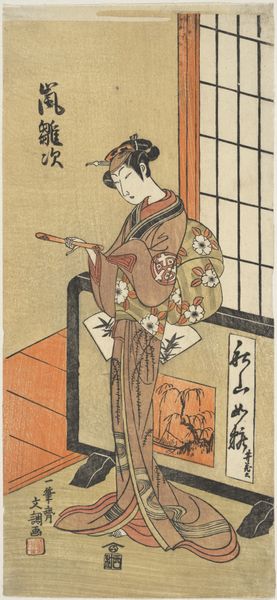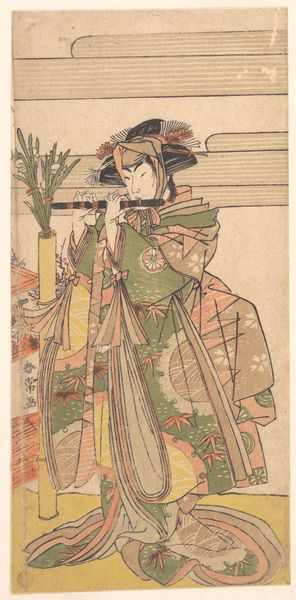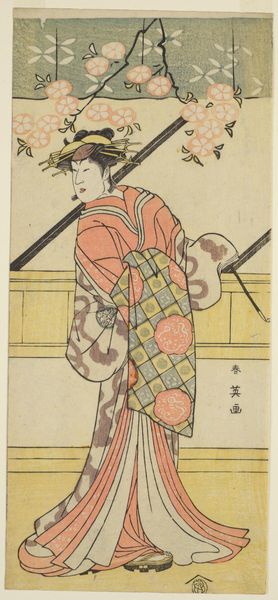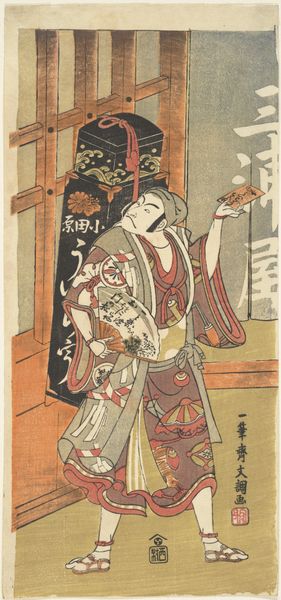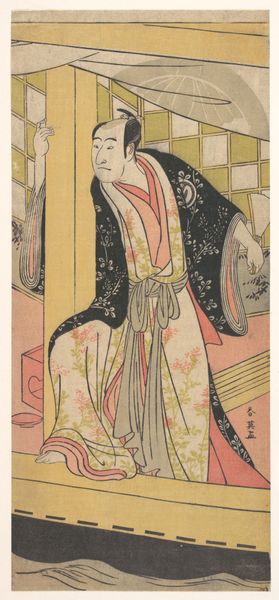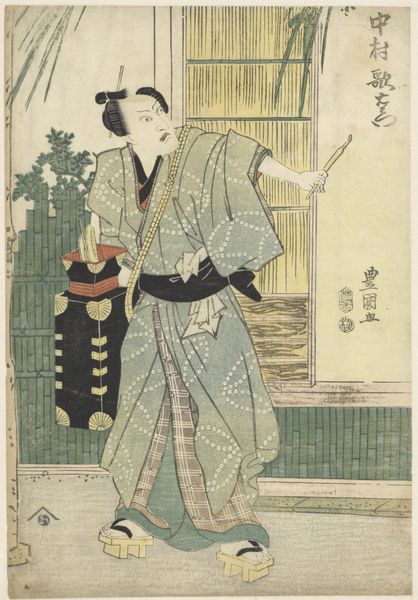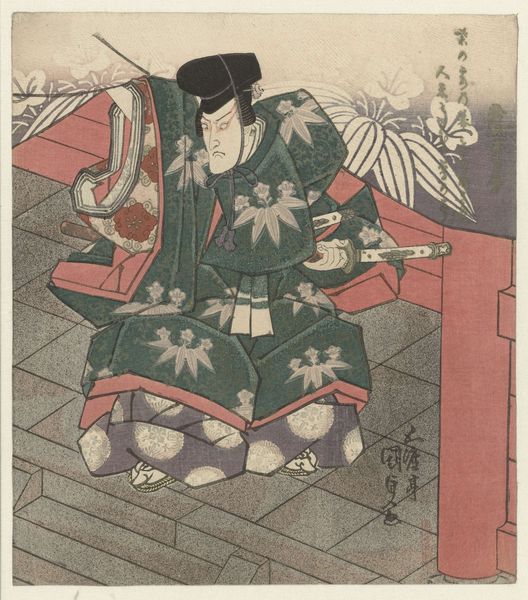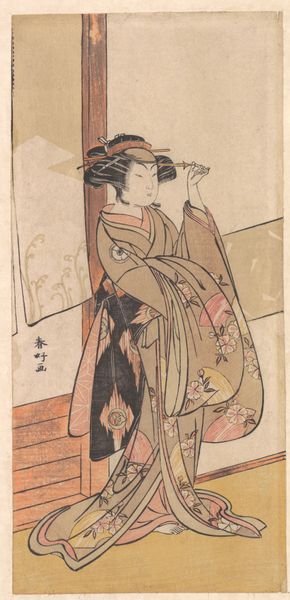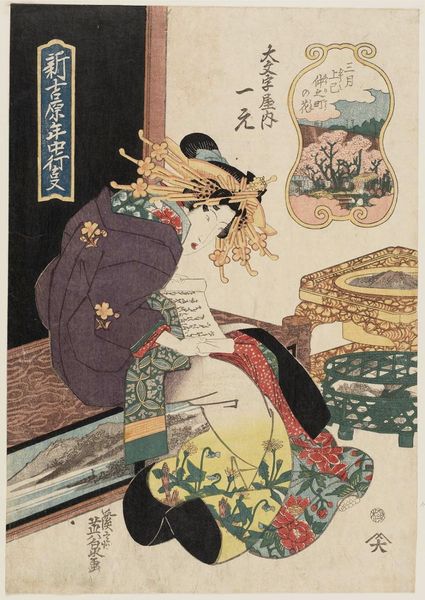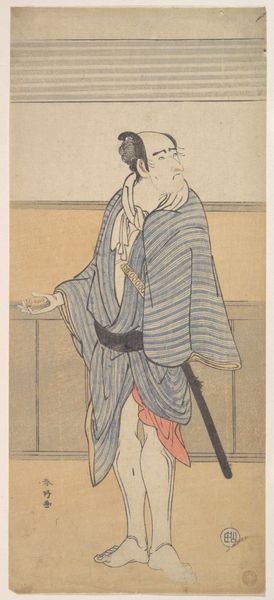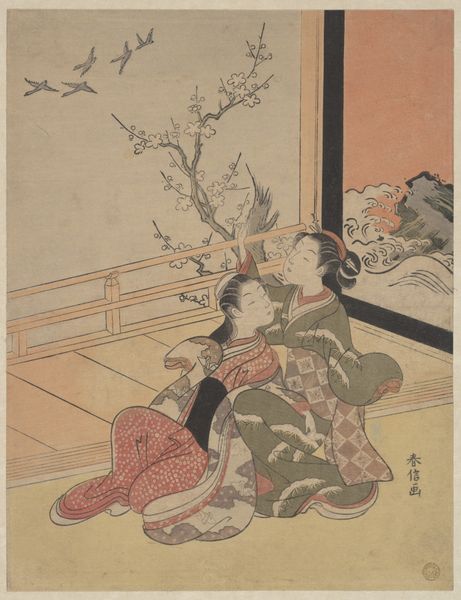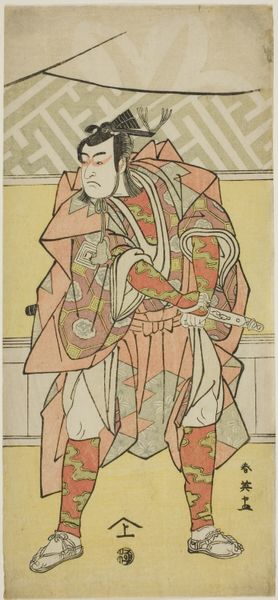
Arashi Ryuzo as a Tall Woman Standing on the Engawa 1779 - 1799
0:00
0:00
print, woodblock-print
#
portrait
# print
#
asian-art
#
ukiyo-e
#
figuration
#
woodblock-print
#
genre-painting
Dimensions: 12 1/2 x 5 2/3 in. (31.8 x 14.4 cm)
Copyright: Public Domain
Curator: Standing before us is “Arashi Ryuzo as a Tall Woman Standing on the Engawa," a woodblock print crafted by Katsukawa Shunko, sometime between 1779 and 1799. Editor: It evokes such quiet strength, doesn't it? The pose, the gentle downward gaze… it speaks of inner contemplation despite the actor's imposed disguise as a woman. Curator: Indeed. The portrayal transcends mere representation, becoming an exploration of duality, artifice, and identity, prevalent themes in ukiyo-e art and society at that time. Observe, for example, the meticulously detailed kimono, acting as a symbolic facade. Editor: It's hard to ignore how class and gender performativity are interwoven into every single color and shape—the patterns of her outer robe hinting at the constraints and expectations imposed on women, versus the male figure embodied here. There’s a sense of societal restriction being negotiated by a single actor through deliberate choices about clothing and gesture. Curator: Absolutely. Gender was performed so distinctly at this time. And the fan, so delicately rendered, features blooms alluding perhaps to feminine ideals of beauty, juxtaposed against the kabuki actor himself as carrier of such ideals. This tension highlights both performance and a deep-seated irony. Editor: What’s compelling is how that irony perhaps comments on the performance of power, and the subversion of traditional norms by challenging binaries—masculine versus feminine, private versus public, performance versus reality. Her very presence, as both male and female simultaneously, critiques fixed identities. Curator: Quite so. Looking closer, there is a particular expression. His subdued eyes tell us this isn’t just a portrayal but an emotional landscape where the boundaries between actor and role become blurred. Editor: Looking at "Arashi Ryuzo," the composition speaks to both controlled artistry and disruptive potential. It encourages dialogue not only on the piece's art historical merit, but more pointedly about gender, power, and representation even today. Curator: This piece reminds me of how artistic symbols can encapsulate far deeper emotional realities. Editor: This piece, truly, is an invitation for ongoing reflection.
Comments
No comments
Be the first to comment and join the conversation on the ultimate creative platform.
